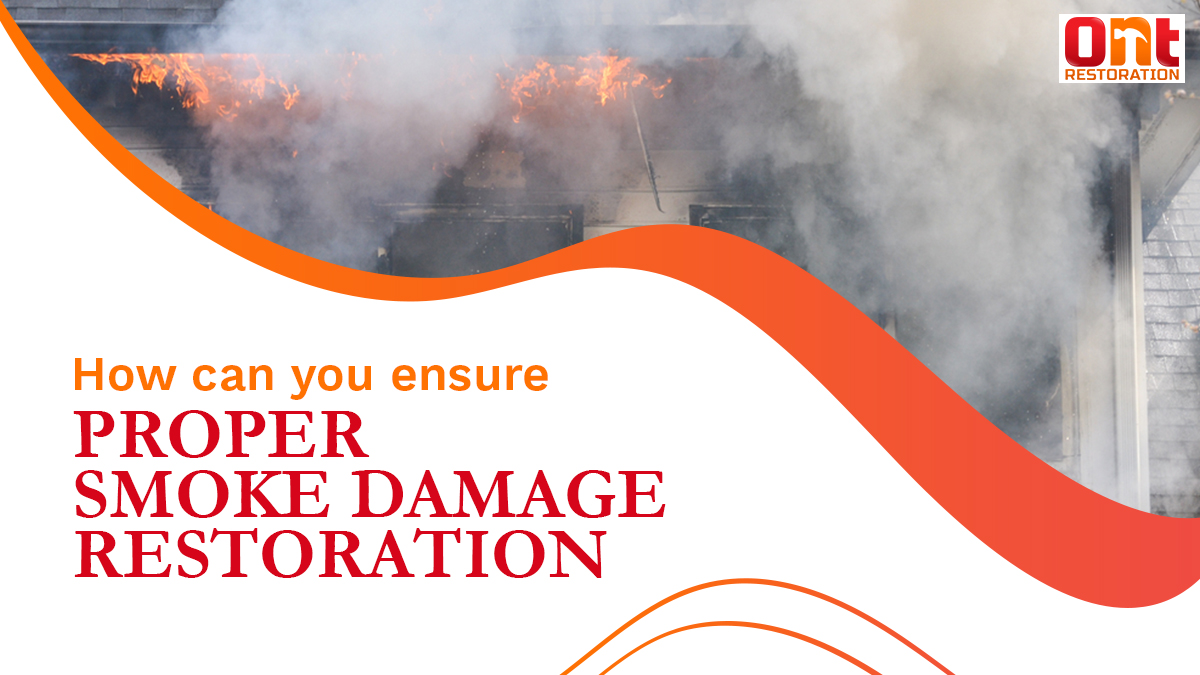Accidental smoke and fire can cause a lot of damage to your home. But where does smoke damage remediation start, and how does it work step by step? It’s not as easy as it looks. Smoke damage damages health, wealth, and many other factors. Only smoke damage restoration can help at that time.
What is Smoke Damage?
The damage after a fire is enormous, but the damage is not only structural. Smoke pollution after a fire can be a severe problem, and proper smoke removal is essential to reduce the health hazard. All parts of a building and its contents are susceptible to damage, even if they are not directly affected by the fire. Smoke damage and ash not only cause significant damage around the fire site but can also continue to cause material corrosion if left untreated.
Types of Smoke Damage
If all fires caused the same damage, the smoke cleanup process would be easier to control. They don’t, and that makes the job harder.
Different materials pose different kinds of smoke control problems.
- Wood – Burning wood pollutes the air with soot and volatile organic compounds.
- Natural Materials – Smoke is produced from other natural materials covered with ash that spreads to the surface.
- Plastic – When plastic burns, it produces a cloud of thick smoke and disperses a sticky residue on the affected area.
- Proteins – Normally, cooking proteins on fire leaves a greasy tan stain.
Steps to Take Care of Smoke Damage Restoration
Primary Assessment
The first and most important thing to do when cleaning smoke damage is evaluation. Don’t go alone. Call emergency services. They will come to your aid and assess the situation and what can be done to reduce the damage caused by the smoke. You need to know the true extent of the damage. That way, you can plan how best to move forward.
Ensure you have these Tools
The most common tools used by professional fire repair contractors to remove smoke damage are:
- Air Scrubber – This device purifies the air in your home while removing smoke odors.
- Negative Blower – A negative blower creates negative pressure in the air, removing all kinds of pollutants and other harmful byproducts from your home.
- HEPA Vacuum Cleaner – HEPA stands for High-Efficiency Particulate Air. HEPA vacuum cleaners help trap soot particles on various surfaces. HEPA vacuums use filters to trap dirt and airborne particles and remove them from your home.
Use these tools in combination or individually to remove all smoke and soot residue from your home.
Check air circulation
Keep windows and doors open while cleaning fire soot, as fresh air flow can help reduce smoke odors. Run fans in rooms that need drying, but turn them off while you work on removing soot from those areas.
Remove soot from surfaces
Remove powdery soot from the furniture with a HEPA vacuum cleaner. Apply the vacuum’s upholstery attachment to the affected area, but do not press the nozzle against the surface. Hold the leftovers up and into the vacuum attachment. This technique minimises the risk of contaminated particles embedding deep into soot-covered surfaces.
Use a dry sponge on walls and ceilings
It is impractical to operate the vacuum cleaner on walls or ceilings. Instead, use a dry sponge specifically designed to remove dirt. The material in these vulcanised rubber products will absorb the powdery residue, so don’t overload the sponge. Run across the surface in vertically overlapping strokes. Wipe the soot from the bottom of the wall to the ceiling, a few inches at a time.
Finish cleaning with a degreaser
Once the surface layer is removed, finish cleaning with 1 gallon of warm water and one tablespoon of degreaser. You can also use a solution of warm water and white vinegar. A combination of sponge and degreaser also removes soot from the glass.
Pay attention to the unpleasant odours
Soot removal is the last important consideration when removing smoke damage. Vacuum and sponge to remove surface contaminants, but should remove strong, unpleasant smoke odours. It takes time and patience to get rid of this odour. DIY options include placing a bowl of vinegar or baking soda in the smoke-affected area. Small bags of activated charcoal can also be used to absorb lingering odours. Fire damage repair professionals like ONT work with specialised equipment that speeds up the process.
Power Tip: Throw away such items
After smoke damage, certain items, such as perishables stored at room temperature for extended periods, should be discarded. If food is exposed directly to smoke, it should be discarded. Check your medicine cabinet to see if the smoke has damaged anything. If you notice anything distorted by exposure, discard it immediately.
In Ending
Hopefully, following these steps will leave your home looking the same as before. Unfortunately, for most fire damage restoration, these methods alone are not enough. If smoke or soot damage persists, or if there is other damage to your home from the fire, contact a professional restoration Company, such as ONT Restoration, immediately.

